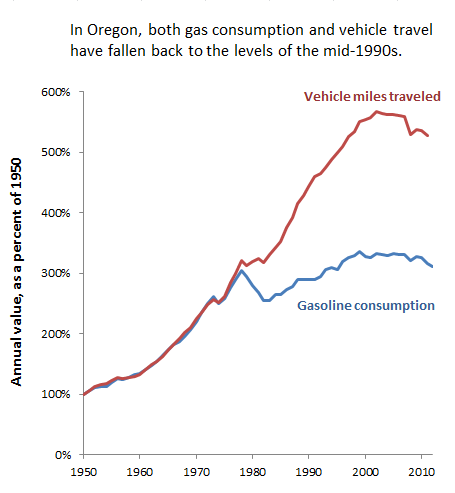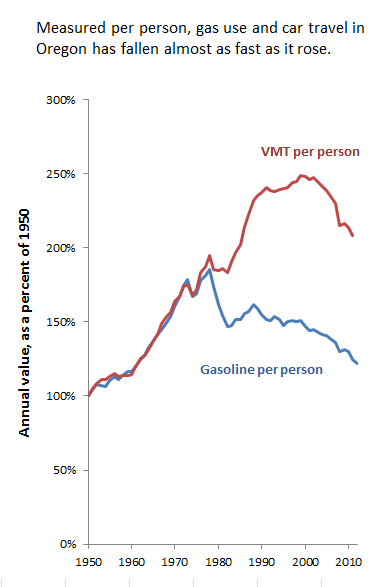There’s a lot of history packed into this chart on Oregon’s vehicle trends: the seemingly relentless driving boom of the 1950s through 1990s; the decoupling of gasoline consumption from vehicle travel after the OPEC crisis and the economic downturn in the late 1970s; and, most recently, the peaking of both gasoline consumption and vehicle travel in the late 1990s and early 2000s, respectively.
But perhaps even more telling is the following chart, showing the same trends adjusted for population growth:
It’s sort of astonishing: measured per person, vehicle use on Oregon’s state-owned roads has fallen almost as fast over the last decade as it rose during the “driving boom.” Gasoline use per person is falling quickly too, due to a combination of reduced driving and improved efficiency.
To me, the implications are as profound as they are obvious: Oregon neither needs, nor can it afford, massive highway expansions. Oregonians are driving less, and any attempt to raise new transportation revenue from drivers—whether from tolls or from gas taxes—is likely to dampen demand even further. It would be nice if Oregon’s legislature agreed with me. But if Washington’s experience is any guide, convincing legislators that they don’t need a new, bigger highway can be an uphill battle.
Update: By email, a thoughtful commenter wondered if my comments above suggest that I oppose using tolls to raise transportation revenue. The simple answer: NO!! I think that well-designed tolls are an essential tool, both for managing demand and for raising revenue. But transportation planners should recognize that tolls will reduce the demand for driving. Just so, a smart tolling regime can even boost the capacity of roads, by limiting peak-hour traffic congestion. Transportation planners should carefully consider the effect of tolls as they’re designing roads—so that they don’t overbuild the roads for no good reason!



Comments are closed.